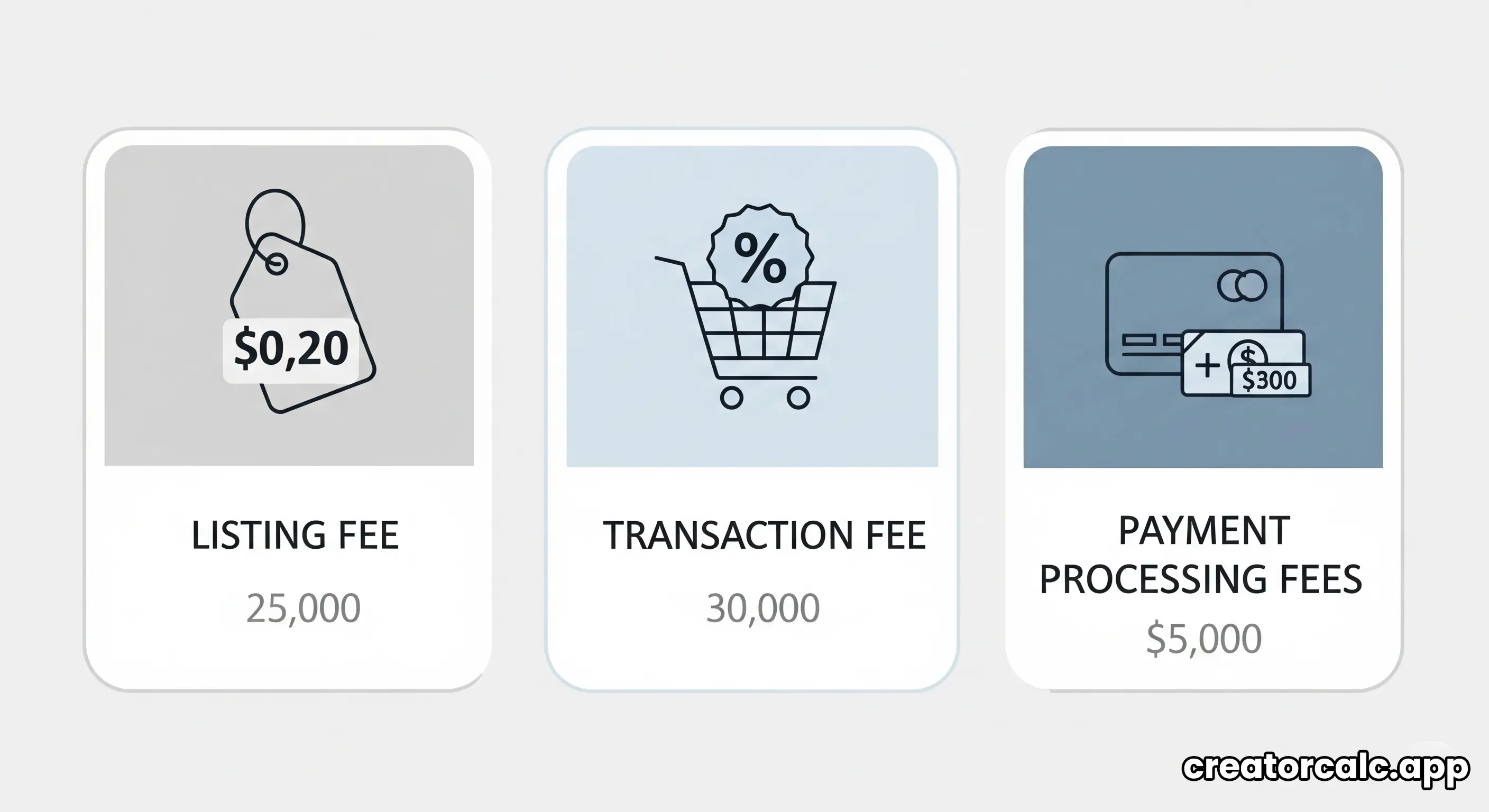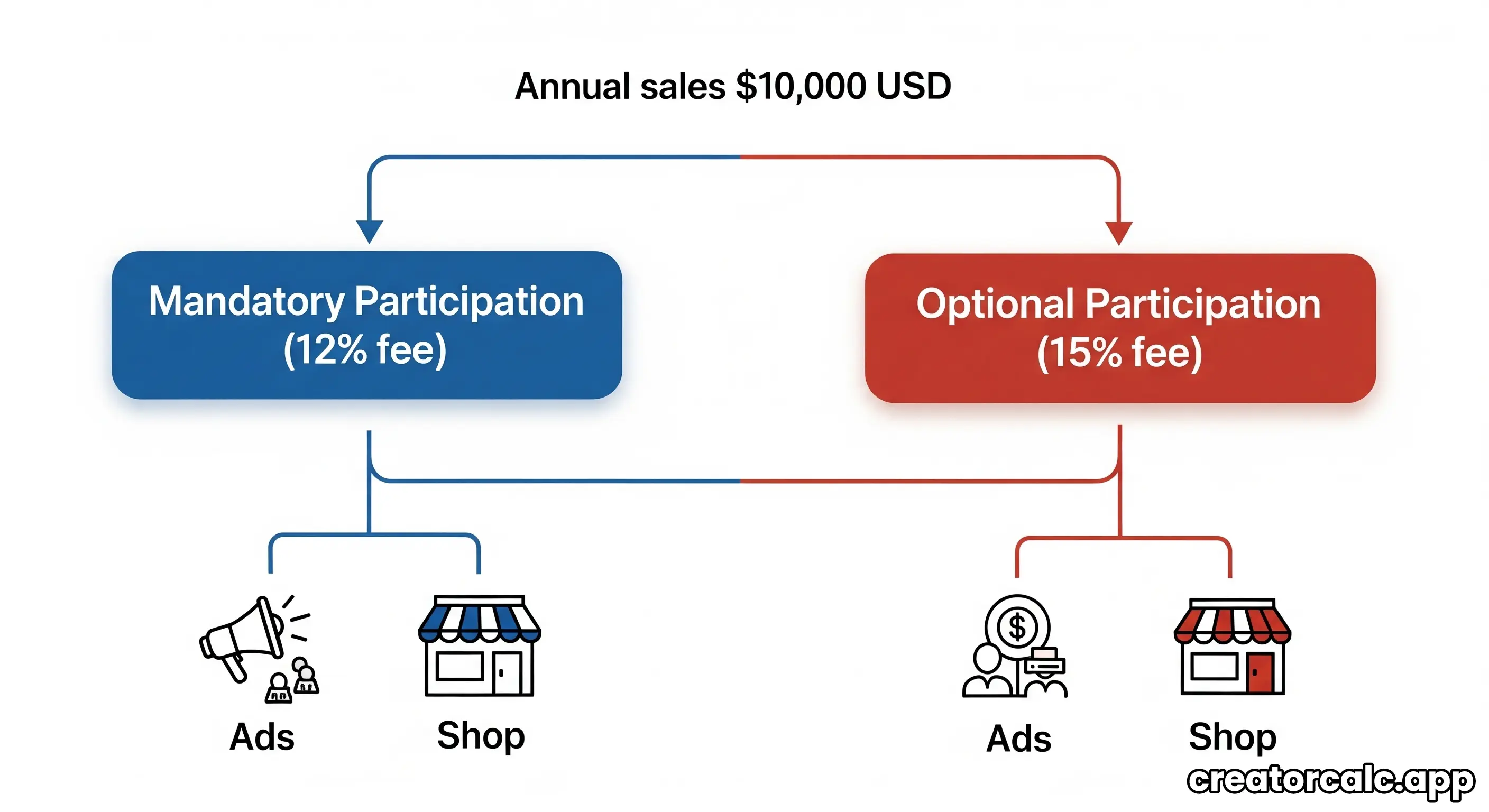You made a beautiful product. You took great photos. You listed it on Etsy. A sale comes in! It's an exciting moment. But then you see your payout. It's less than you thought. Why? The simple answer is Etsy fees. Understanding these fees is key to running a profitable shop.
Many sellers get confused by the different charges. This guide will make it easy. We will explain every type of Etsy fee. You will learn how to know your real profit. This will help you price your items correctly.

What Are The Main Etsy Fees?
Etsy has a few core fees. Every seller must pay them. Let's look at each one. We will keep it simple.
1. Listing Fee
This is the first fee you pay. It's a small cost to put an item in your shop. You pay this fee for each product you list.
- Cost: $0.20 USD.
- When you pay: You pay when you create or renew a listing.
- Duration: A listing stays active for four months. After four months, it expires. You must pay the fee again to renew it.
2. Transaction Fee
This fee is charged when you make a sale. Etsy takes a small percentage of your total sale price. This includes the product price, shipping cost, and any gift wrapping charge.
- Cost: 6.5% of the total order amount.
- When you pay: It's taken automatically after a customer buys your item.
3. Payment Processing Fees
When a customer pays you, the money goes through a payment system. This system also charges a fee. For sellers in the US, this is typically 3% + $0.25 of the total sale amount.
Advertisement
Other Potential Etsy Fees
Besides the main fees, there are others. You may or may not have to pay them. It depends on how you run your shop.
Offsite Ads Fee
Etsy advertises your products on other sites. These include Google, Facebook, and Instagram. If a customer clicks an ad and buys from your shop, you pay a fee.
- If you make over $10,000 USD a year: You MUST participate. The fee is 12% of the order.
- If you make under $10,000 USD a year: It is optional. If you opt-in, the fee is 15%.

Currency Conversion Fee
If you list your products in a currency different from your bank account currency, Etsy will charge a fee to convert the money. To avoid this, list your products in the same currency as your payment account.
How to Calculate Your Real Profit
Now you know about the fees. Let's see how to find your profit. It's a simple formula:
Profit = (Product Price + Shipping Charged) - Material Costs - All Etsy Fees - Your Shipping Cost
Using a tool like our Etsy Fee Calculator can do this math for you instantly. It helps you avoid mistakes and price correctly.
Frequently Asked Questions (FAQs)
1. Are Etsy fees too high?
Etsy fees can seem high, but you are paying for access to a huge market of buyers. Smart pricing can make the fees manageable.
2. How can I reduce my Etsy fees?
You cannot avoid the main fees. But you can manage them. You can bundle items to reduce listing fees per item. You can also decide if Offsite Ads are worth it for your shop if you have the choice. The best way is to factor all fees into your pricing from the start.
3. Do I pay fees if I don't make a sale?
You only pay the Listing Fee even if you don't make a sale. All other fees (Transaction, Payment Processing) are only charged after you sell an item.
4. What about taxes?
Yes, you must pay taxes on your Etsy profit. We recommend reading our detailed tax guide for Indian creators or consulting a tax professional in your country.